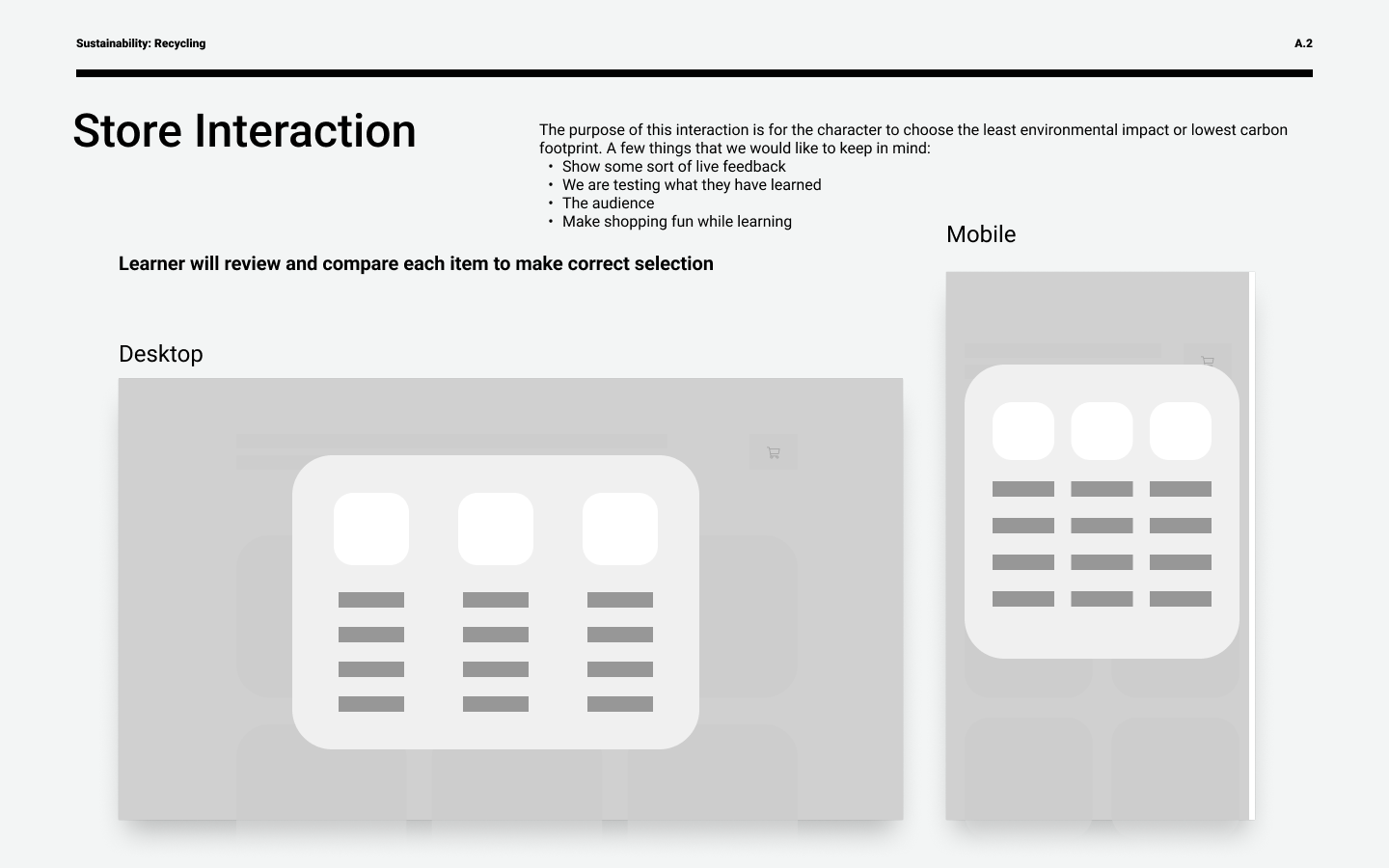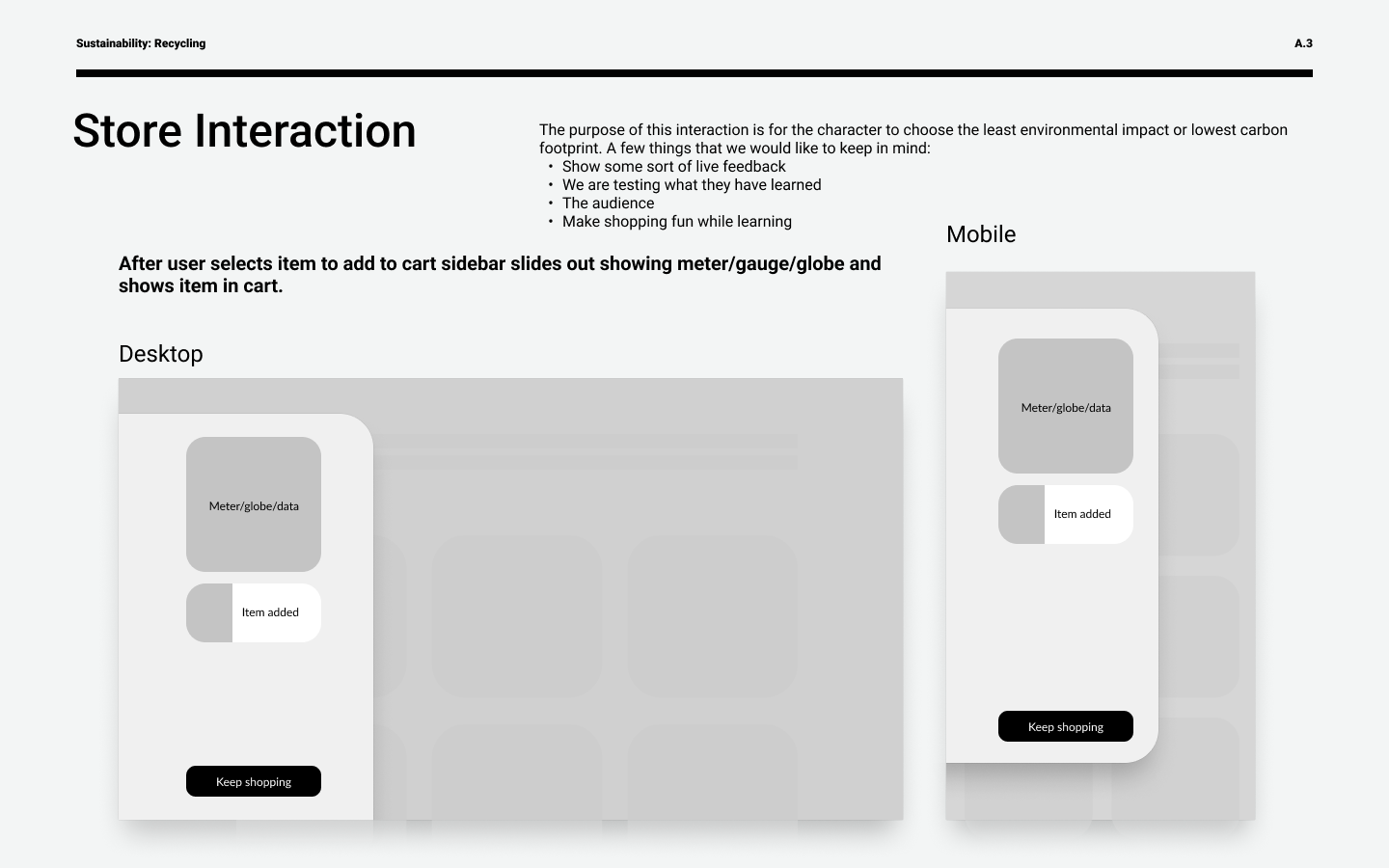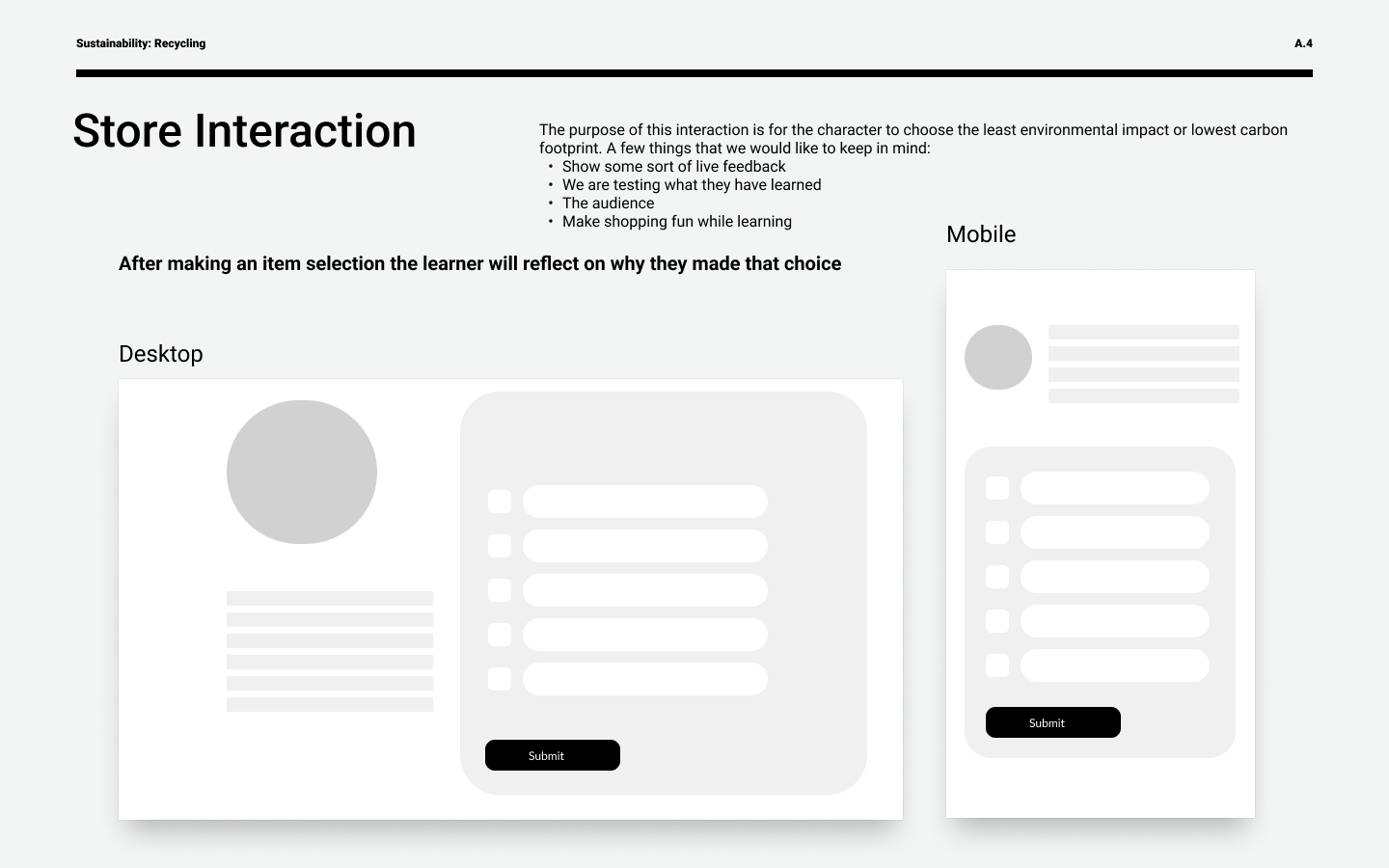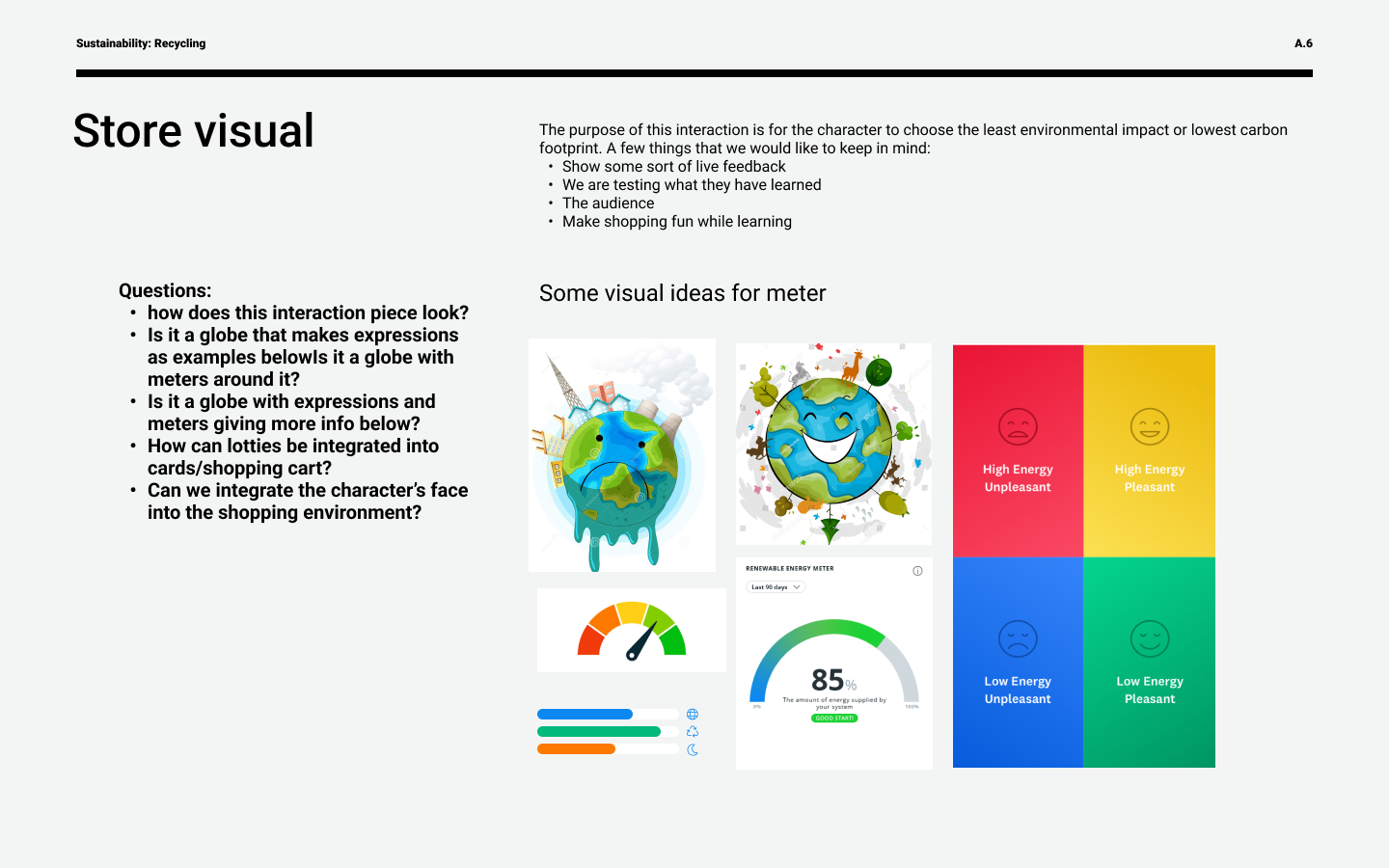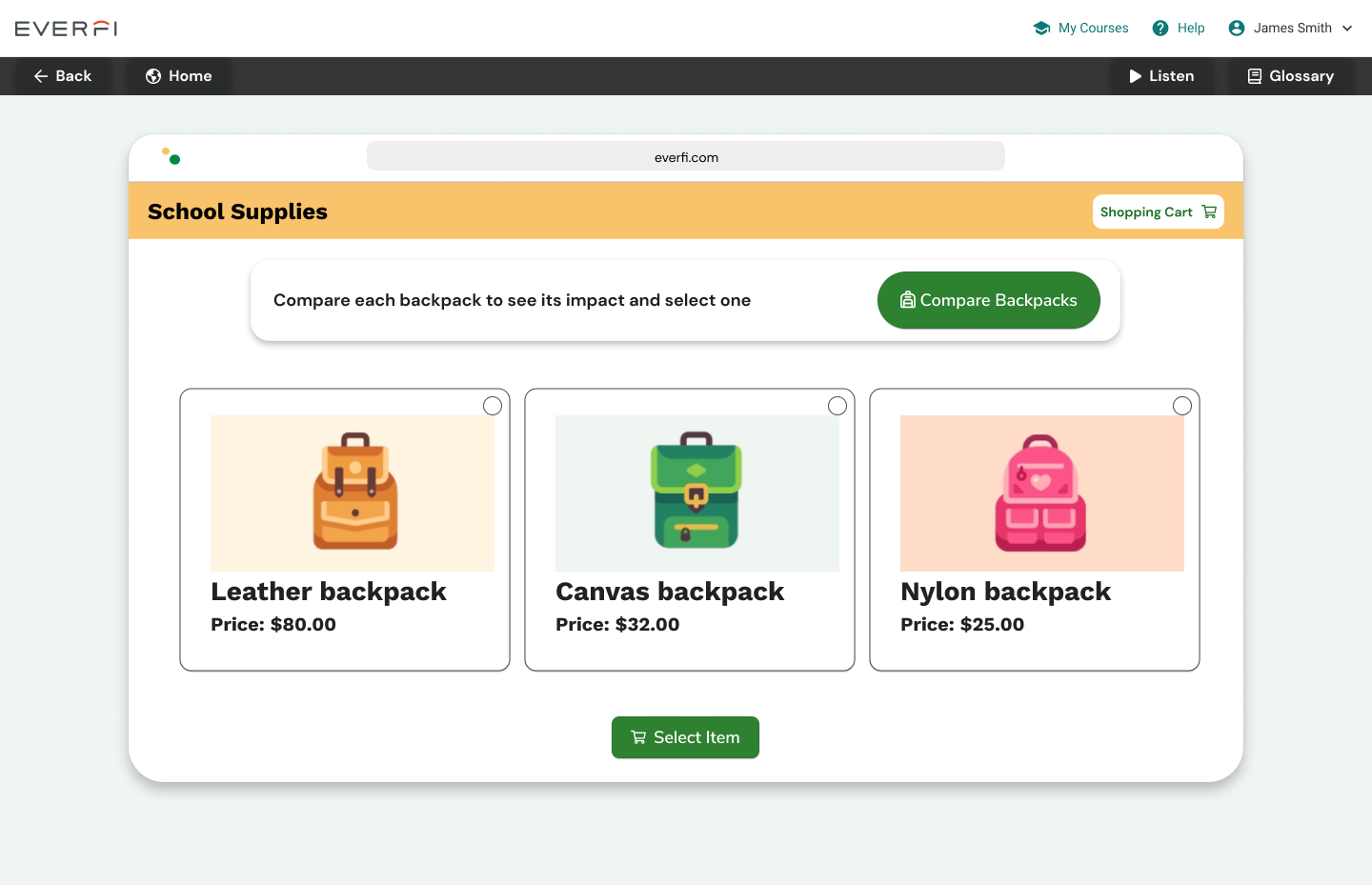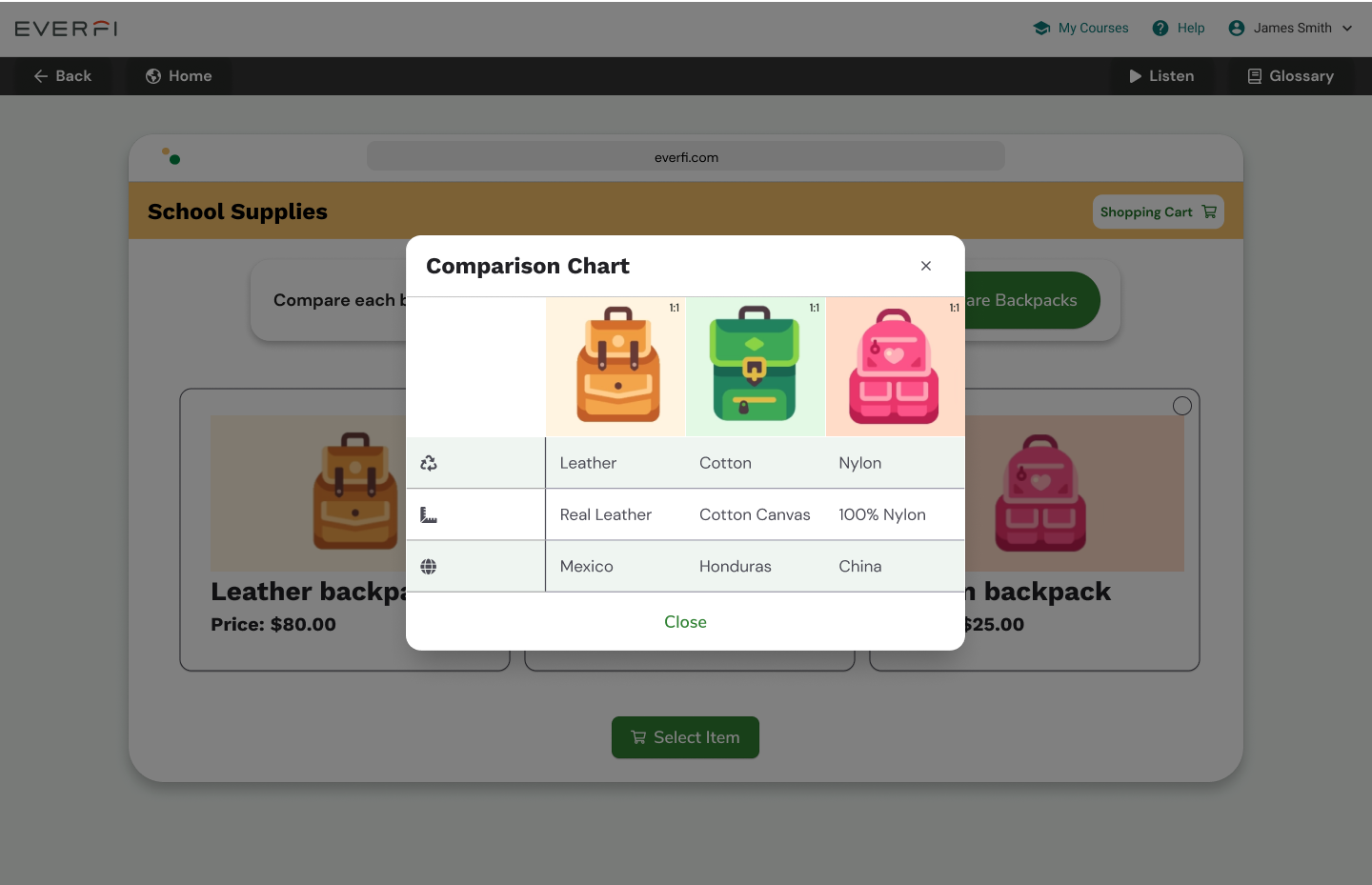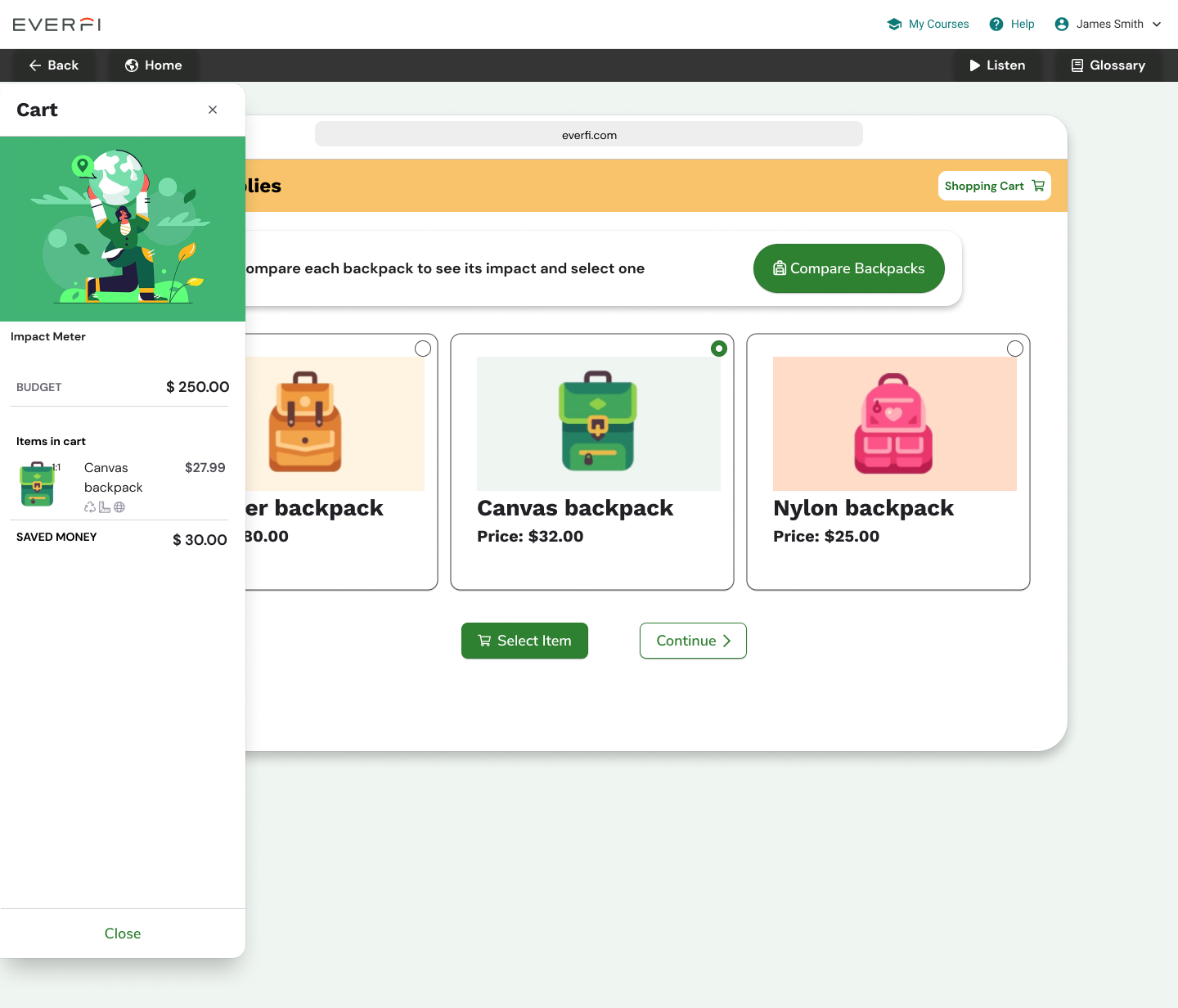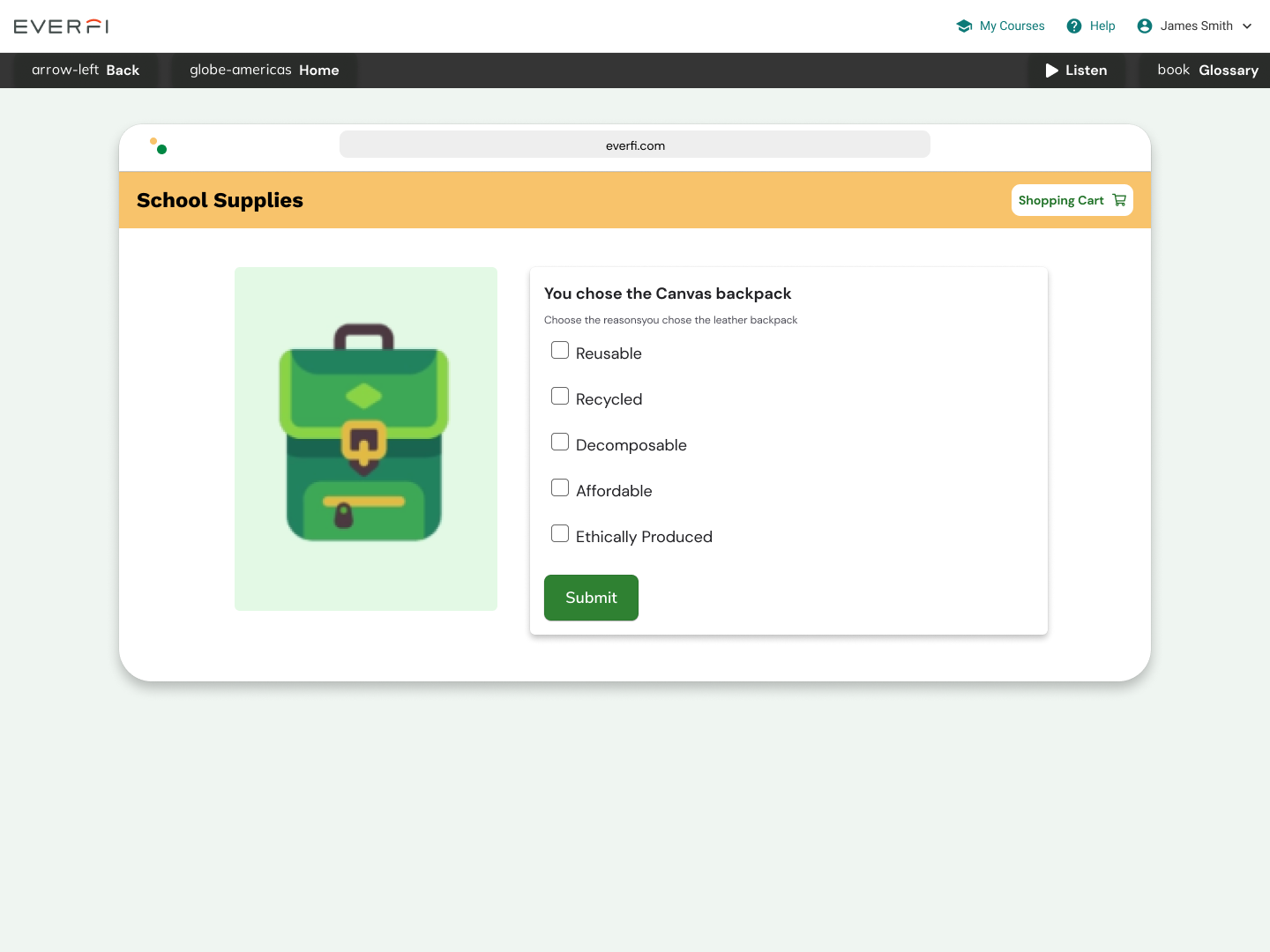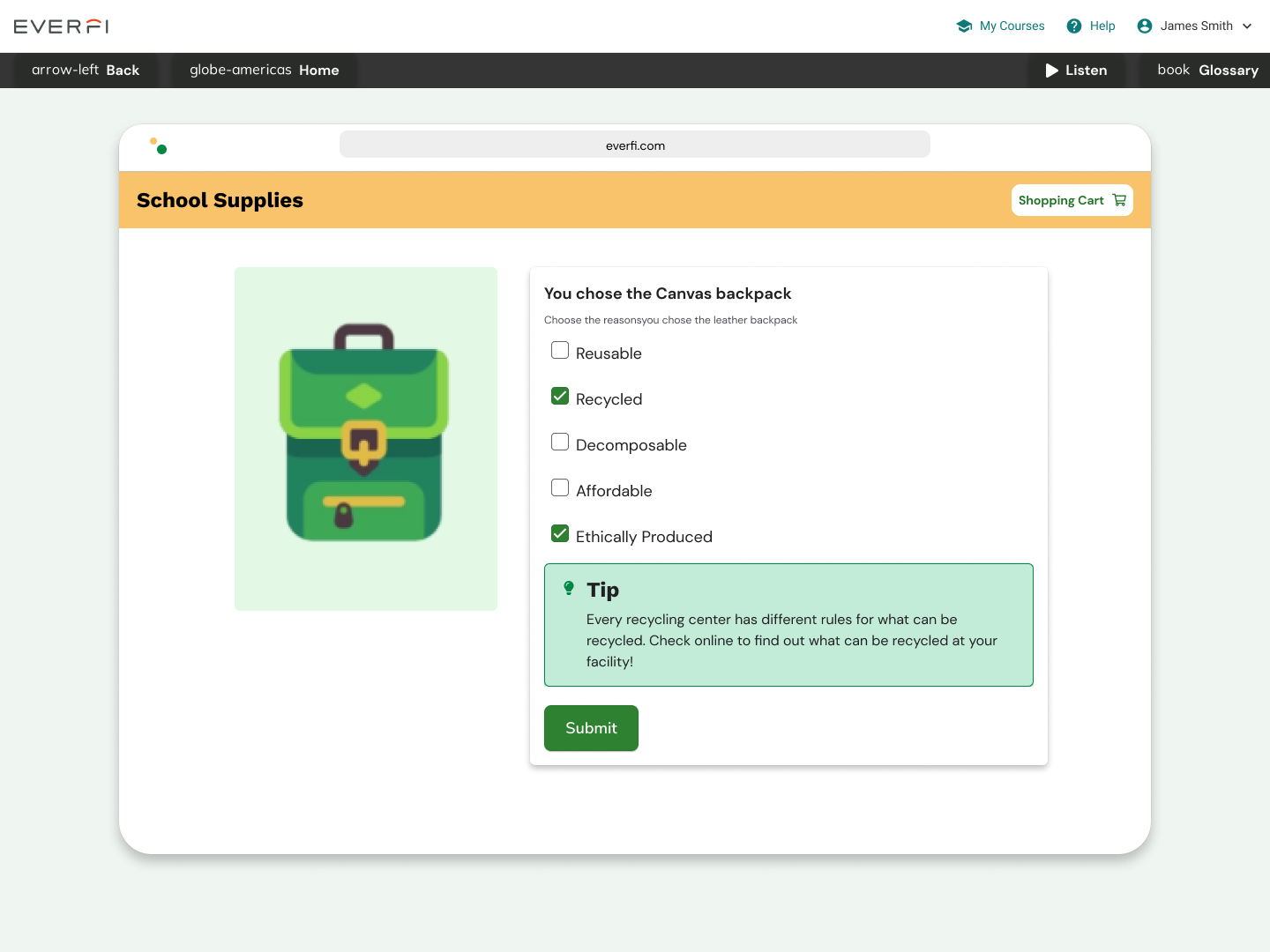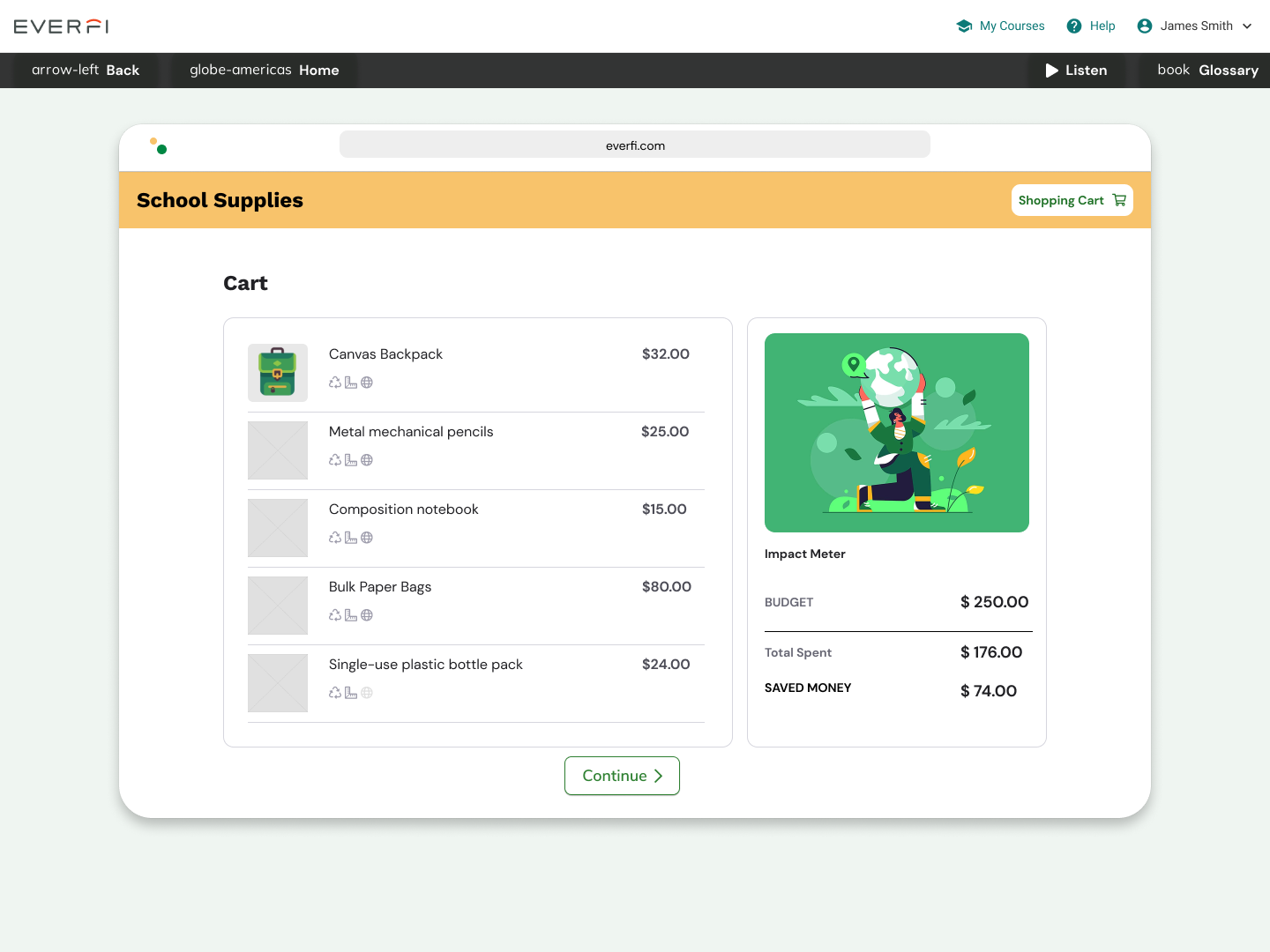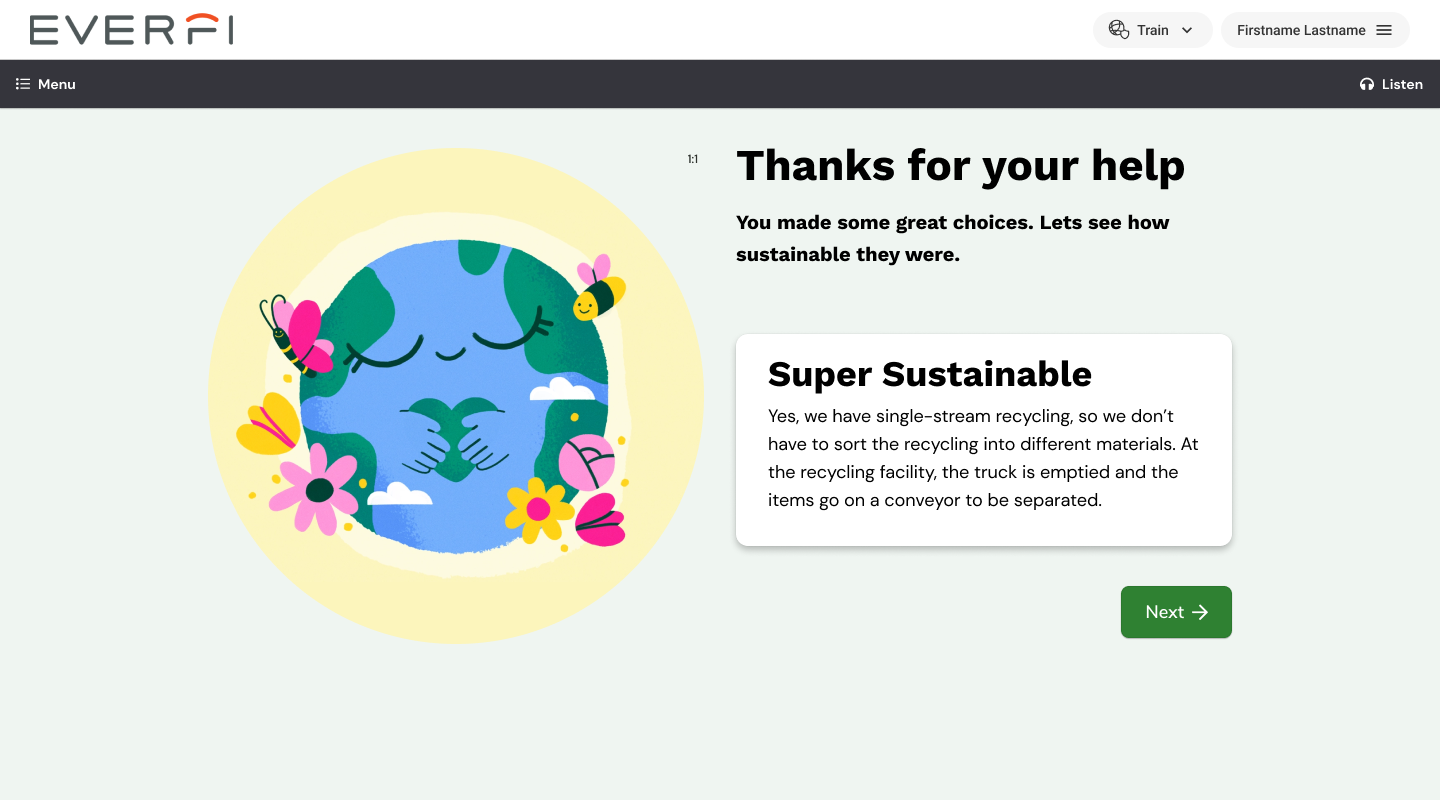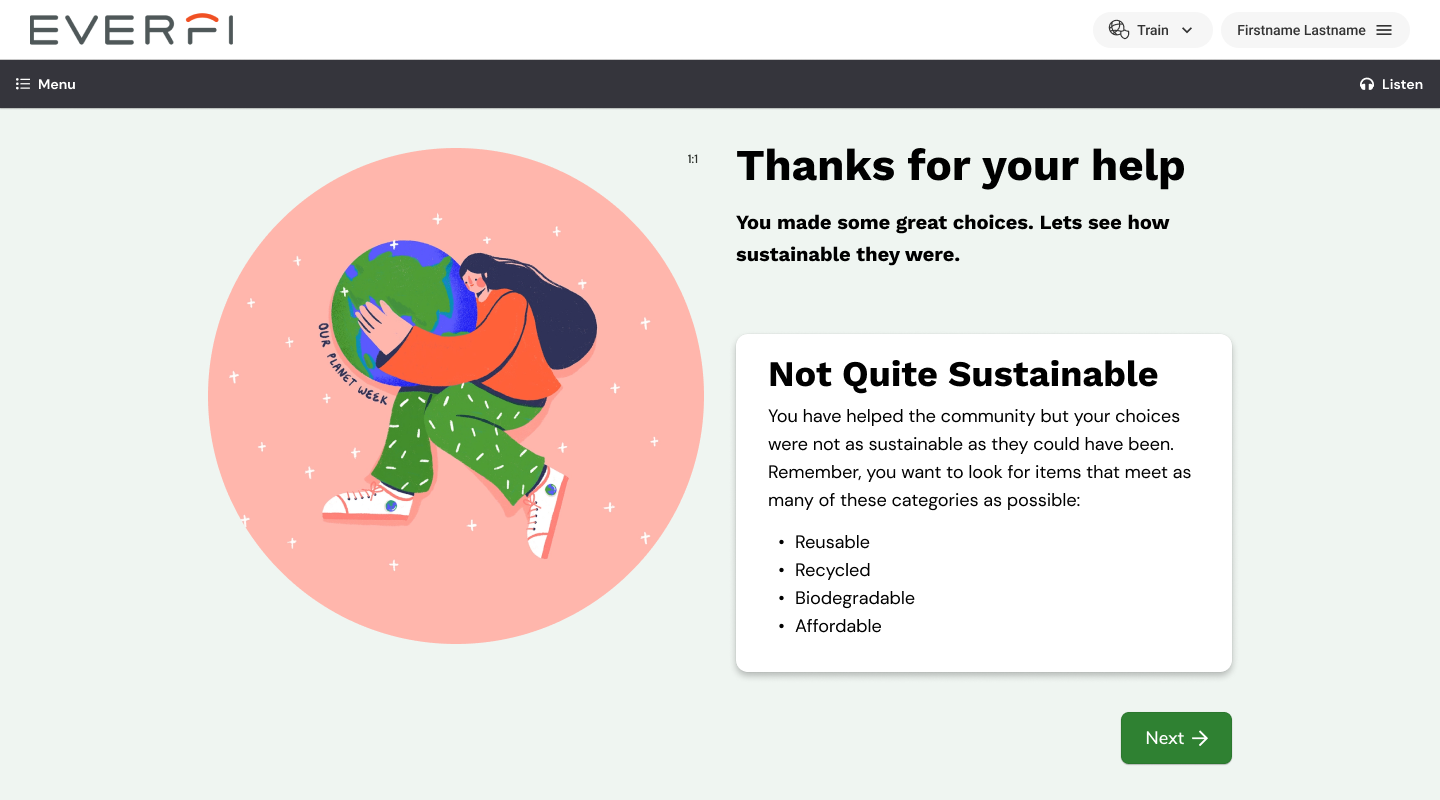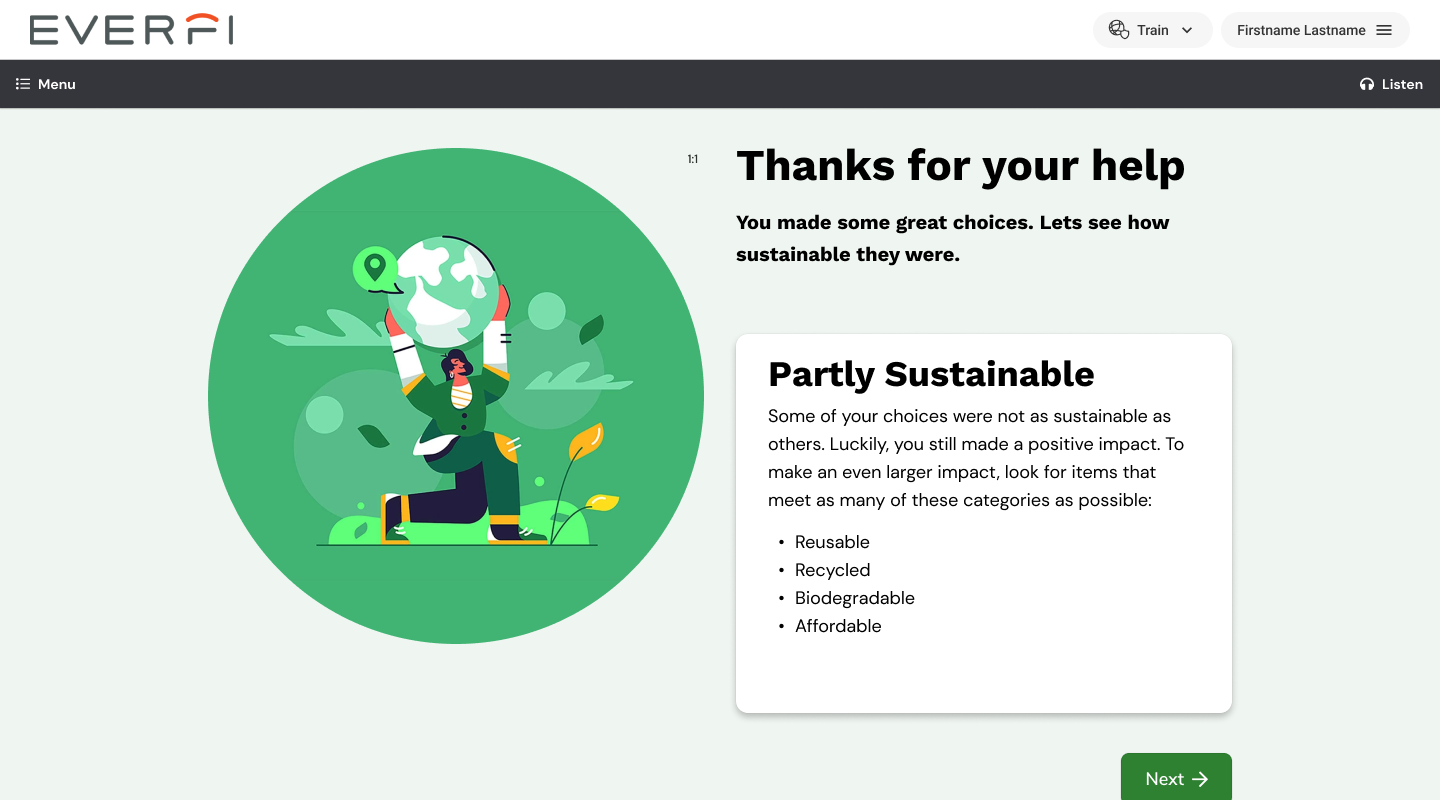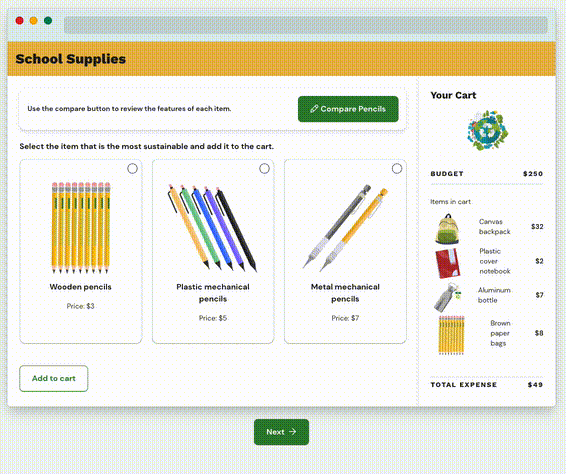Simulation-based learning
Immersive and engaging learning through realistic scenario-based experiences
Role
UX Lead
Interaction Design
IA Design
Layout Design
User Research
Cross-functional Collaborators
Content (Learning Experience)
Visual Design
Implementation Specialist (Dev)
Overview
Accessible and scalable simulation-based learning experience where the user can learn how to analyze choices and make decisions based on current information and receive feedback on the impacts of their choices. In this experience, the learner will get to practice their new skills in realistic simulations that reflect accurate environmental science.
Solution Approach
What should we build and how?
Before thinking about how to build this simulation we needed to understand what we need to build. The first task was to align with the rest of the cross-functional team members and understand:
What are the learning objectives
Analyze choices
Make decisions based on current information
Self-reflect on the choice made
Understand the impacts of their choice
How are they going to achieved
How the user would achieve the objectives?
How do want to tell the story?
How can we make it a scalable solution?
How can we minimize development time?
Work sessions
To accomplish this I led a few sessions where we could analyze and understand the learning objectives, define the scenarios, game mechanics, game logic, ideate, and wireframe solutions, always keeping in mind that even though this game, in particular, would teach learners about the environmental impact, I needed to design a solution that could be adapted to other topics.
Game flow, mechanics, logic
With the scenario and tasks as a blueprint, I designed the end-to-end game flow. This helped define the game mechanics and logic.
Game Flow
Game Logic
Layout ideation
Parallel to the previously mentioned work, during the work sessions, we would ideate as a team how the simulation would look and feel, and which of our existing components we could use since some of our goals were to minimize development time and scalability. We went through several iterations. With all this work done we could start working on a proof of concept.
At each incremental step, I would meet back with the larger team to present my approach so we could revise, review, ideate, and iterate. This allowed everyone to be informed on what we were building, and how the simulation worked, and for each stakeholder to give input, it’s highly important to have everyone's voice heard. And finally to have sign-off from all stakeholders.
Proof of concept
Following the work sessions, we had enough information to visually start ideating a proof of concept we could put in front of an audience. During design sessions, we worked with the platform implementation specialist to validate that what we proposed could be built with a low level of effort and we validated with other stakeholders that this game simulation could be adapted to other topics.
With the live proof of concept in hand, our next step was to socialize with the internal team, test out the flow, game mechanics, and design, and that it achieved the learning objectives.
Usability testing
We performed usability testing with the target audience through TryMyUI and well as accessibility testing through Fable. The overall usability was great and there was comprehensive knowledge gained after taking the course with the game in its entirety.
One key outstanding pain point was found related to the financial element of the game. The learners felt the “money saved” element was distracting from the main learning objective. We opted to remove it from the main game mechanic but do show it on the final review page as we felt, for this course topic, it was important to understand that sometimes the less expensive option might not be the more environmentally friendly one. Thinking of scalability this is a feature that we removed from this particular simulation but kept as a mechanic in the code for others that might need it.
Lessons learned
This was the first time we attempted to design a learning simulation by focusing on the learning objectives and scalability rather than creating a unique experience for a specific topic. With this new perspective in mind, I started to think more strategically about how to build more engaging course experiences by understanding what the user needs to learn.
Everfi’s courses are built one specific module at a time. When getting around to working on larger parts of a project we have had limited time to build complex interactions like this one. I proposed that we start the larger tasks early and in parallel to allow for it to go through the entire design cycle with enough time for each step.

